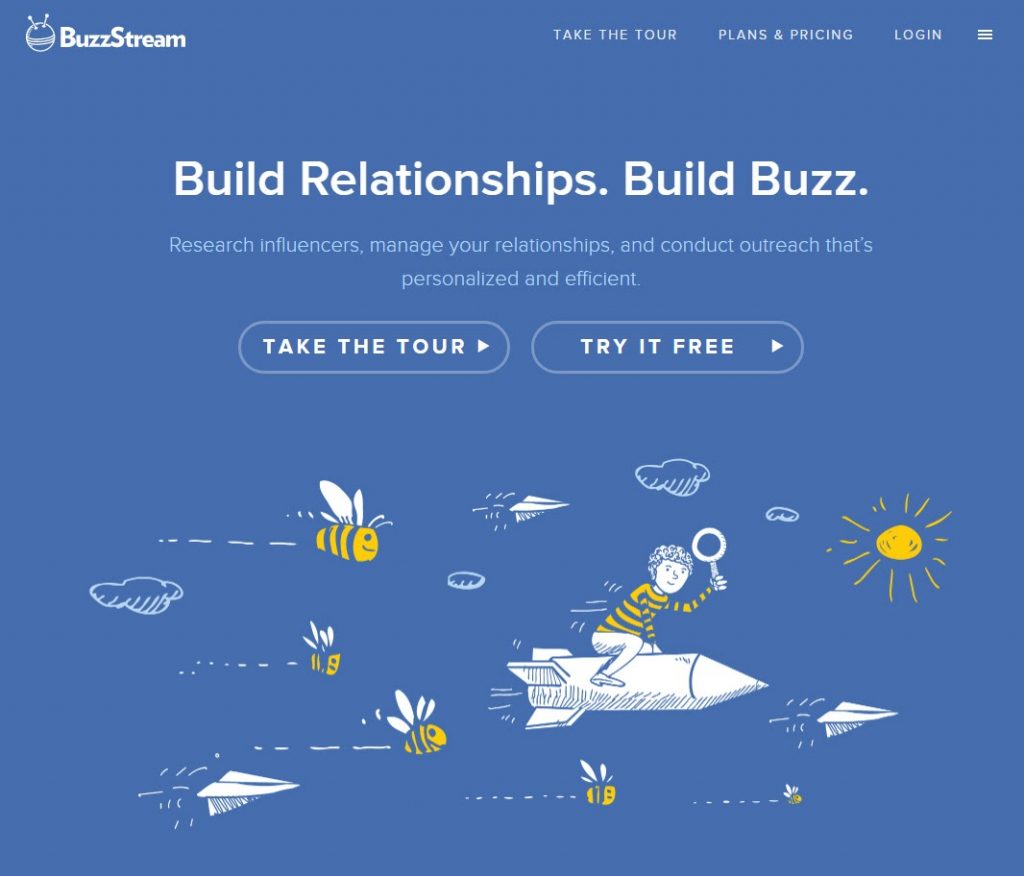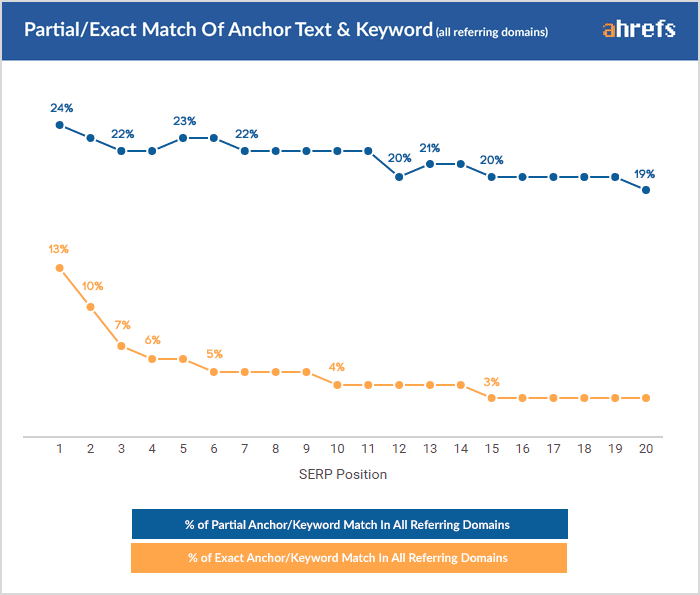
Link Building is one of the cornerstones of search engine optimization and the most important part of your Off-Page SEO.
Useful services for Search Engine Optimization
There are several different tools available to facilitate your work with SEO. Here is a list of tools that can be useful as you go through your search engine optimization.
Free services from Google
Google Search Console
Google PageSpeed Insights
Google Web Vitals
Google for Retail
Google My Business
Premium services for SEO
SEMrush
Ahrefs
Moz Pro
KWFinder
Other useful services and plugins
Hemmingway Editor
Grammarly
Sucuris site check
Panguin tool
Yoast SEO
On your website, you have full control over what happens with On-Page SEO. When it comes to Off-Page SEO, you do not have the same amount of control. However, there are several things you can do to create the best possible conditions outside of your website.
When it comes to search engine optimization, links are one of the most important factors when aiming for the highest possible Google rank. If you want to end up at the top of the search results, you need to build links. Good content goes a long way, but not all the way.
Inbound links could be called Off-Page SEO’s evergreen content. As long as the links you build remain, the benefits of Google will remain.
Following are some tips to get you started with link building as well as a few other things you should try to influence and improve your Off-Page SEO.
Focus on link building that actually generates traffic – The Golden Rule of Link Building
What are the best types of links? It might not come as a surprise that the answer is links that increase referral traffic.
All links that create genuine referral traffic are good for you and your SEO. They will also be future-proof for when Google chooses to update its algorithms. Links will always be one of the cornerstones of the Internet.
How do you find a web prospectus for referral traffic? Generally through looking at websites and asking yourself if you think that the page in question generates traffic and if it is likely that their visitors would click on links to your website.
Finding and making this type of assessment for prospects can be difficult without data. Because of this, services that can estimate traffic volumes can be very helpful and beneficial.
Data you should look for when investigating intended referrals:
- Organic traffic volume
- Domain ratings
- URL ratings
Since Google has had a patent for “Reasonable Surfer” for a couple of years now, it is probably the case that you already pay attention to the likelihood that a visitor clicks on a particular link. Thus, it also becomes an important part to take into consideration when creating referrals.
Since it is most likely that contextual links in content that the visitor clicks on, you should see these as the most valuable.
Use Google My Business for local anchoring
If you run a company with local anchoring, Google My Business can be directly decisive for how you perform in local searches. My Business gives you the ability to optimize how your business profile appears in Google’s SERP, Maps, and Knowledge Graph.
Using My Business, you can easily enter your business’s NAP, e.g. opening hours, photos, manage reviews, etc. In current times with the coronavirus present, it is also possible to add extra information that concerns, in this case, a pandemic and changes in how you act because of it.
It’s pretty common that your company already exists as a profile on Google. If so claim your profile listing in order to manage its data. If your company does not exist, you simply create a new profile.
Go through your profile and enter / update as many fields as possible. We then recommend that you make sure always to keep the information current and active.
There are three main factors for ranking with My Business
- Relevance – How relevant is your business to the person applying? In other words, it is essential to state what kind of business you offer clearly. If something is unclear, it will simply not rank well.
- Connection – Where is your business located in relation to the visitor and other businesses nearby? Creating locally based content on your site can help you rank higher.
- Being Prominent – It’s all about creating activity around your business profile. Be active with your profile, respond to reviews, organize local events, update photos, etc. Also, be sure to update both your website and profile in My Business so that they contain the same information.
Recommended reading:The ultimate guide to small business SEO
Boost your sales with Google for Retail and Merchant Center
If you run an E-commerce site, you do not want to miss the opportunities offered by Google for Retail and Merchant Center. This tool from Google gives you that little extra you need to boost your sales.
E-commerce is growing globally year after year. Because of this, it is therefore becoming increasingly important to optimize your channels to make sure your products/services reach out. This is where the Merchant Center can give you a head start.
Google for Retail, where Merchant Center is included, is like an online inventory management system where you can showcase your products in Google search results, create campaigns, and consequently increase your sales.
Important to keep in mind when using Google for Retail / Merchant Center
- Be clear and straightforward with your product names, short and descriptive is the best.
- Enter as much data (product type, size, color, price, etc.) as possible for your products.
- Use clear product images (preferably product placed against a white background).
Try to think like the customer. What does the customer want when looking to find the right product? Then optimize your product pages and listings based on those factors.
For more, please read: How to Sell on Google Shopping
Do not be penalized, do not ignore Penalty Notifications from Google
Something that should not be swept under the rug is manual penalties from Google.
A manual penalty means that someone from Google has reviewed your site or link profile and found something suspicious.
The penalty can be due to any of the following:
- For aggressive or manipulative link building
- Low quality content
- Suspicious outbound links
- Non-moderated user-generated content
- Manipulative use of scheduled code
Manual spam penalties will usually be communicated through email and the Google Search Console.
Addressing manual penalties can be difficult. Be careful if you need to delete links, de-index pages, etc. If you are unsure, it might be time to hire an SEO consultant for help.
Reject ALL dubious links (maintain high quality)
If you are serious about your website, you should avoid building links that can be classified as spam. This type of link building simply does not work.
You should generally review your links at regular intervals so that links with lower quality that have a negative impact on SEO do not make their way in. At the same time, having regular check-ups will give you useful information on the links that are actually worth nurturing. Use any available SEO service to see the “toxic level” for inbound links.
All links that look suspicious or are of low quality should be removed. This means that you either need to contact those responsible for the page that links to you or use Google’s tool to reject links.
Filter out annoying referral spam – clean and neat statistics
Referral spam is when false signals about visits are sent to Google Analytics, which is both annoying and harmful to your statistics.
This type of junk in the statistics usually looks something like this

It is relatively easy to filter out referral spam. Learn how to do it yourself in Ahref’s article An Actionable Guide To Stopping Referral Spam In Google Analytics.
Track outbound links with Event Tracking – gain better insight into your visitors
The more you know about how your visitors use your site, the better. In other words, it may be worth configuring Event Tracking for outbound links.
If you are sending a lot of referral traffic to another site, it can be a perfect opportunity to reach out to these sites in order to build links.
Fix broken links for a directly streamlined SEO
Broken links are in no way any good. However, they are relatively easy to fix which consequently will give you an immediate SEO boost.

There are a few different ways to find out which links are broken links. Primarily you can usually find out which links are broken in your statistics. If that does not work, there are also WordPress extensions that can search your site to find broken internal links.
Fix any broken links by contacting those who linked to you and ask them to update the link. Alternatively, you can easily set up 301 redirects for broken links.
Two good plugin choices for managing redirects are 301 Redirects – Easy Redirect Manager and Redirection.
Get traffic from broken links that others miss
Stealing links may sound suspicious, but there’s actually nothing strange about it. We only fill in the holes where content is missing due to broken links.
- Find broken links to your competitors that have been moved or removed.
- Offer your resources in exchange for the broken links.
To find broken links to your competitors, you can use any of the available SEO services such as “Broken backlinks” in Ahrefs Site Explorer.
Do not worry about “nofollow”, focus instead on link quality
While “dofollow” links remain the best from an SEO point of view, it is generally accepted that “nofollow” links have some impact on SEO too.
Linked text affects Google Rankings, but should be used sparingly
Ahrefs conducted an investigation looking at no less than 16,000 keywords. What this survey showed was that text links with keywords still have a significant impact on rankings.
However, they also concluded that it is required to stay below a certain limit to not be penalized by Google. Exact matches should be kept around 2% and partial matches around 30%. This means that 1 in 3 links should contain the keyword you want to rank on.
In other words, one should stay below these limits to avoid punishment from Google’s Penguin-algoritm.
Keep an eye on your competitors’ links and steal some of the traffic
If an interesting page links to one of your competitors, chances are you also want to be linked!
Again, you can use any of the SEO services available to find which pages link to your competitors and to find where opportunities to build links are.
You should also try to keep track of what new backlinks your competitors are creating. Some services offer notifications for new links that are built on specific websites. This way, you can match possible links that your competitors are building.
If you find a site that links to multiple of your competitors, then you have found the perfect opportunity to build a link.
You can use Ahrefs Link Intersect Tool to find link opportunities. When you have found one just contact the website owner and convince them why they should link to you too!
Find recurring backlinks from the same source to your competitors
Encountering a website that link multiple times to the same competitor can be a really good opportunity for you to build quality a link from the same site.
To top it all off, these types of backlinks can also give you some insight into the marketing strategies that your competitors are using.
Find the content from your competitors that is most linked to, and do it better
Using any of the tools available for SEO, you can usually find which contents from your competitors have the most amount of inbound links.
With that knowledge, you can analyze the content and then make your own better version and reach out to the pages that link to it, ultimately “stealing” those links.
Create awesome “link bait” for increased traffic and links
What we mean by that is something similar to viral content that is created to build links.
‘Linkbait’ is content that’s specifically formulated to attract links. It’s something so cool, valuable, and unique that (given the opportunity) any industry blogger/influencer would be hard-pressed not to link to it. These links then help to improve the site’s rankings in search engines.
Joshua Hardwick, Ahrefs
It can be any type of content, but usually tends to be one of the following:
- Infographic/”guestographic”
- Data-driven maps
- Sleek visualization of data
- Branch specific curated resource pages
- Cool interactive tools and contents
If you create something cool, preferably visual, that connects with your target audience, your content will spread like wildfire. People love to share things they are passionate about.
One tip is to try to find ways to spread your content through pop culture (music, series, movies, etc.). There is already a ready audience here on which you can focus your marketing.
If you do not succeed in any of these, you can always try to hitch a free ride on already created viral content to generate traffic to your site.
Build links with timing, get more inbound links
There is a simple trick to boost your success in reaching out, timing!
When an article is brand new, the author is more likely to want to link to you.
With the help of most SEO services, you can create new content notifications based on specific search terms. You will then be notified when new content becomes available so that you can be quick in reaching out.
Most of the time when you want to reach out, you would want to do it with a personal and friendly tone. But there are also times when you might want to be more formal.
Let’s say you reach out to a lecturer at a university to create a link on a resource page. In this situation, you may want to start your email in a more formal way.
“Hello Dr {surname}”
Instead of
“Hey {surname}”
In other words, it can be good to think about which tone you use depending on the receiver.
Another tip that can help when trying to reach out to bloggers is to share one of their social media posts before contacting the person (do not forget to tag them so they see your share).
This starts you off from a good spot and gives you something to go from when you contact them to request a link.
Streamline your backlink campaigns with BuzzStream
Many times it is about contacting prospects to ask for incoming links or to create different kinds of exchanges. Therefore, setting up a campaign with different goals can be a good start.
Reaching out with smaller campaigns can be managed in your regular email client. But with a larger list of prospects or if you work in teams, it can be easier to manage everything via one of the available services.
BuzzStream is one of the best tools for managing scaled outreach campaigns.

With BuzzStream, you can automatically find contact information for your prospects, which of course makes it all a lot easier.
If you do not like BuzzStream, you can try one of these options:
Regardless of which tool you choose, there are a few things you should pay attention to ensure that you get the most out of your campaigns.
If a prospect reads your message more than once, then you are in a perfect position to send a follow-up. But wait a few days. Never send more than ONE follow-up. The line between marketing and spam is slim, and you definitely do not want to cross. it
Reuse and syndicate your best content to generate even more traffic
Create less, market more. An effective way to breathe life into good content that has started to get some time on its neck is to reuse it to create new content. For example, you can create infographics, videos, SlideShares, or whitepapers from your best evergreen content and share them on relevant pages.
You can also take the opportunity to broaden your audience by posting your coolest content on syndicate websites, for example:
- Medium
- Linkedin Pulse
- Social Media Today
- HubPages
You do not have to worry about duplicate content as long as you link back to the original as a source.
While you are at it, why not remove those old articles/pages that no longer draw any traffic at all and post them on other sites like LinkedIn and then link to your page.
Recommended reading: The Ultimate Guide To Repurposing Content
Create links on Wikipedia and make sure they stay there
Anyone can add links to Wikipedia. The difficult thing is to get them to stay on the side. So how do you get the links to stick? It’s really not any harder than this.
Add your links under the following terms
- Only add links that match your content 100%.
- Make sure your content is good and adds value.
- Make sure it provides additional value to the Wikipedia page.
If you link to some half-baked content that, for example, is not updated or does not really touch the subject, the link will probably disappear very quickly when it is moderated. If, on the other hand, you link to good content, there is a good chance that the link will remain forever.
Answer questions in various forums and generate traffic from built links
Links from Q&A-pages, forums and similar websites may not be directly of value from an SEO perspective. But it is traffic and traffic is never bad.
It is often times about participating in different kinds of communities, building trust, and then being able to answer questions, give tips, and with these link to your content.
If people click on your links in these posts, it means you have built up trust that also makes the person more receptive to your content and your offers.
Create links for mentions, get more clicks
If someone writes about your business/product/service but does not link to your website, you have yet another perfect opportunity to link building. They have already in one way or another committed themselves to your business. Get in touch and ask if they would like to link to you as well.
Google Search can help you find mentions. But there are also services to use to get real-time notifications of new mentions. For example, Ahrefs Alerts.
Do not shy away from guest blogging, build trust and links
When it comes to guest blogging, many are drawn to well-known industry-leading sites. But it can be very difficult to find a contact enabling this, as competition is high when everyone wants to do the same thing in order to market themselves.
The more effective way is to dare to blog for small or medium-sized sites in the industry. The possibility of generating contacts increases significantly and there is nothing to say that these pages do not grow over time and create more traffic than initially.
A few things to keep in mind when guest blogging:
- Relevance – Is there relevance between your audience and the site you are going to guest blog for? If not, you should reconsolidate!
- Quality – Make sure all your guest posts are of high quality (even when the page you are writing for is a smaller page).
- Keyword Caution – Do not use too many exact matching keywords for text links in the content.
- Branded links – Use branded or “naked” URLs in your bio. Do not use plain text links.
Easy profits – Get recognition for material, through links.
Has anyone “borrowed” copyrighted material (such as an image) from you? Then you can ask them to remove the material. But you can also ask them to give you recognition for your material in the form of a link that can benefit you both.
Boost your best content with internal links
Do you want to give your best content a quick boost? Create internal links to content from other pages on your site with a high URL Rating (UR).
Using the Google Search Console, you can find which pages on your site would benefit the most from a few internal links.
This is how you do it:
Use the Search Analytics Report, sorted by impressions to find keywords with a high number of impressions and an average search position of 11+.
Adding a few internal links to these pages can give a search position in the top 10 and increase traffic volume.
Final Tips
Finally, here are five quick tips that should be essential when working with your SEO and marketing your website.
- Learn as much as you can about SEO from several different sources. Do not miss our series of articles for search engine optimization in our knowledge hub.
- Keep up to date as a lot of changes occur both often and quickly. Google is constantly making changes that you want to keep up to date with.
- Have patience! Effective SEO requires hard work and time; nothing happens overnight. It’s worth it in the long run. Studies show that SEO is what gives the best ROI for inbound market channels.
- Avoid dubious methods at all costs. For example, buying inbound links can often be more expensive than investing in accepted SEO methods.
- Do not spam!
Good luck with your optimization!
Are you interested in learning more about how to optimize your website?
Don’t miss out on our other articles:
- SEO Strategy – Analyzes and measurable CPI – Creating an SEO strategy.
- Keyword Research – Rank Higher by Finding the Right Keyword.
- On-Page SEO
Are you ready to take your website to the next level?
We take responsibility for the operation, maintenance & management of WordPress & WooCommerce. We will assume responsibility from your previous provider and solve ongoing bugs and other problems that may arise. All for a fixed monthly budget.
Take the first step and schedule a meeting with our expert, Amy!
You may also be interested in these articles
Brexit for WooCommerce sellers
The impact of Brexit is huge. There are very many implications for those in e-commerce businesses…
Read more
Brexit for WooCommerce sellers
Cynefin: a valuable framework to classify, communicate and respond to tasks in digital projects
Cynefin. At Angry Creative we think it’s a vital part of digital projects. It helps us to underst…
Read more
Cynefin: a valuable framework to classify, communicate and respond to tasks in digital projects
Web fonts for WordPress
Fonts control how your text is displayed – how the letters actually look. web-safe fonts. W…
Read more
Web fonts for WordPress
Subscribe to our newsletter for tips, inspiration and insight about WordPress and WooCommerce and the digital world beyond.
Time to take the next step towards a more effective website?
Contact us, and we can talk more about how we can take your business to the next level together.

